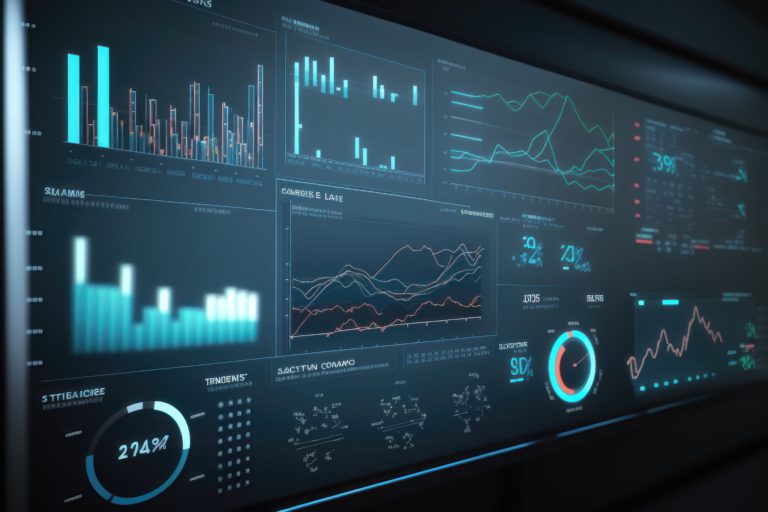Take advantage of the potential of your data

Make the most of your data: the formula
Making decisions based on the correct data is the distinctive element of successful companies.
This is why, although our data being located, organised and properly stored is the first step, it is not enough.
If we really want this data to be useful we need to find the best way to detect, read and manage it so that analysinig them is easier and more efficient.
If all this data is already ours, why do not we use it to improve our business numbers? So, once all the information is well organised, the next step is to show it in a visual and friendly way. This is how we will get:
- To improve our reactivity and to streamline the decision-making, because all the data is available.
- To have an all-encompassing vision of the status of your business, so you can control and see what is going on at a glance.
How can this be done?
An accurate determination of KPIs. The Business Intelligence (BI) that fits better with our needs.
The formula of success: KPIs
A proper definition of KPIs allows you to keep track of the most important indicators for your business. A correct visualization of these KPIs allows you to reduce the time we spend in analysing data and optimizing the company resources. Together, they are the formula of success.
The result?
Reaction capacity is improved and decision-making is streamlined. Thanks to this combination we can:
- Observe negative and positive trends, so we can detect opportunities and deal with possible problems in advance.
- Cross data from different indicators, even from different departments, to be more precise when modifying strategies.
The first step will be to define the KPIs that will give us valuable inputs. Every company is different, so will be the KPIs that they need.
Therefore, it is important to have the advice of business and data analysis experts who have experience in different sectors, departments and types of business. they will help you to find the correct indicators to achieve your goals.
The next step will be to find the most suitable way to visualize the data, so any person of your team, whatever their training or experience is, could understand and use them. Here is where the BI tools come into the game.
Why should we use a Business Intelligence to visualize data?
There are several tools that allow us to visualize data, but if we are looking for one to analyse it too… The best election are the BIs.
They are SaaS focused on understanding and delving into data when you do not have technical knowledge, in a safer way than other tools such as Excel, which has more limitations if we need to turn data into insights.
Differences between a BI and an Excel visualization
| BI | Excel |
|---|---|
| Visual and intelligent, when you have all the information in one place, it is easier to interpret the data. | Dispersed in several documents, books, spreadsheets, etc. It takes a long time to make charts and visual elements in Excel |
| Scalable, available from any device, anytime. | Rigid, accessibility from mobile is practically non-existent. |
| Fast, because they can be updated in real time. | Static, it is necessary to update it by hand, and it takes time. |
The key now is to choose the BI that suits your needs better.
Here you have some of the most used:
Microsoft Power BI
It offers interactive dashboards and augmented analytics. It is available in cloud and on-premise.
Tableau
It is one of the most long standing and intuitive. It is focused on enterprises who manage a big amount of data and that need more complex graphics.
Qlik Sense
It stands out because of its scalability to build strong solutions and for its use of augmented analytics.
Data Studio
Google’s BI and the most basic of all, it is perfect for entreprises that work with Google sources and don’t need to handle a large volume of data.
Advantages of using a Data Warehouse
Something important when approaching a BI project is to choose if all the data we extract from the company’s sources is going to be stored in a database to display them in a BI software. Or, if we directly transform and treat the data on the BI without going through an intermediate database such as a Data Warehouse.
A Data Warehouse allows the storage of data, thus avoiding to consult the source software frequently, reducing the impact on the source and making easy the application of rules, formulas and treatments to the data.
A Data Warehouse gives us a key advatage over BI, and it is independence and control of your data.
Without Data Warehouse
When you connect your information sources directly with a BI, it is in charge of detecting, organising and cleaning the data so that they can later be visualized. This creates a dependency that ensures that, in case your needs change and you have to change the BI tool, the transfer process will be more complex. The key rules of your business are in an “external” software.
With Data Warehouse
You have control of your data, because this database has the information already cleaned and organised. When you connect the BI with your Data Warehouse, it just picks up the data and makes it visual. You only depend on your own storage system.



